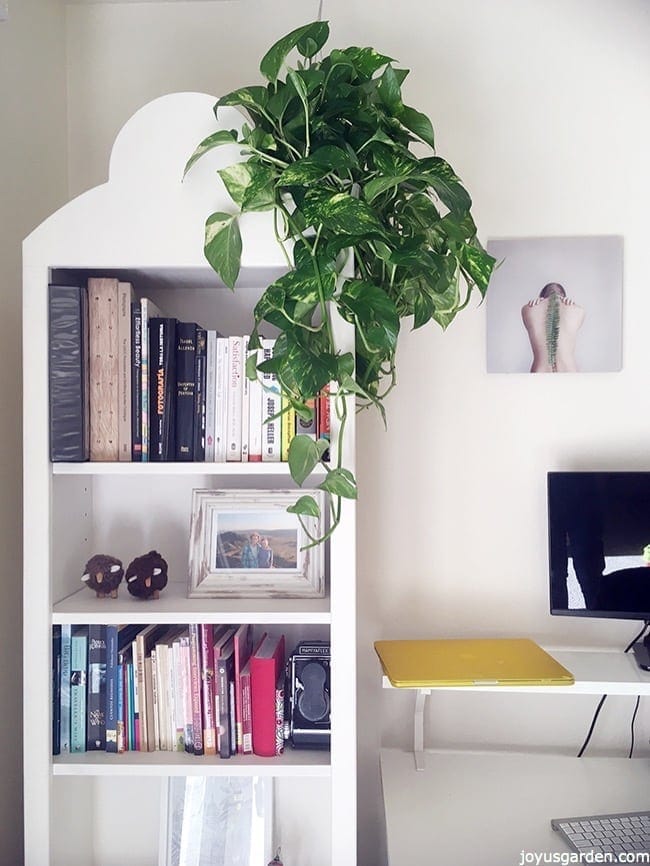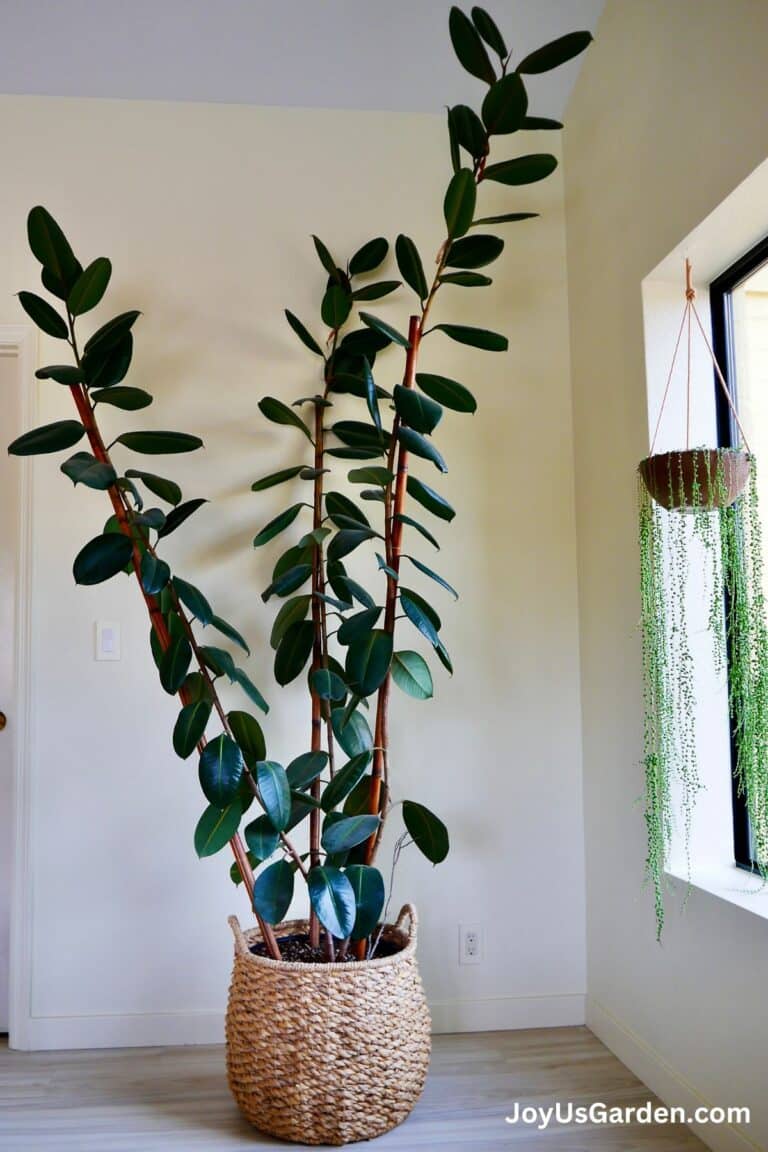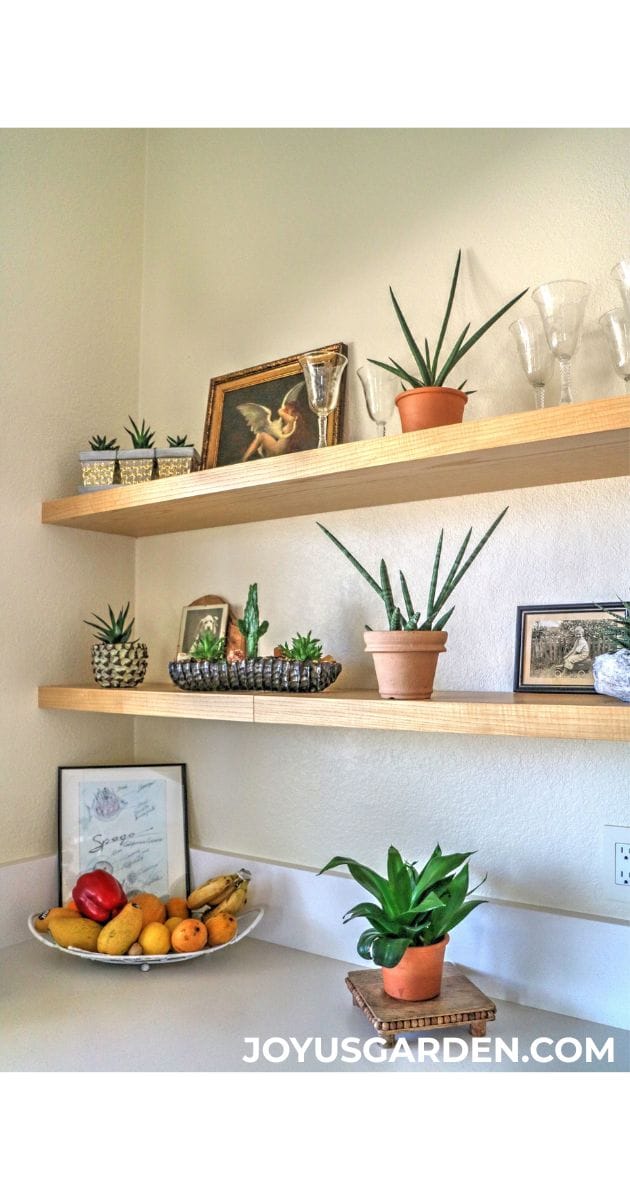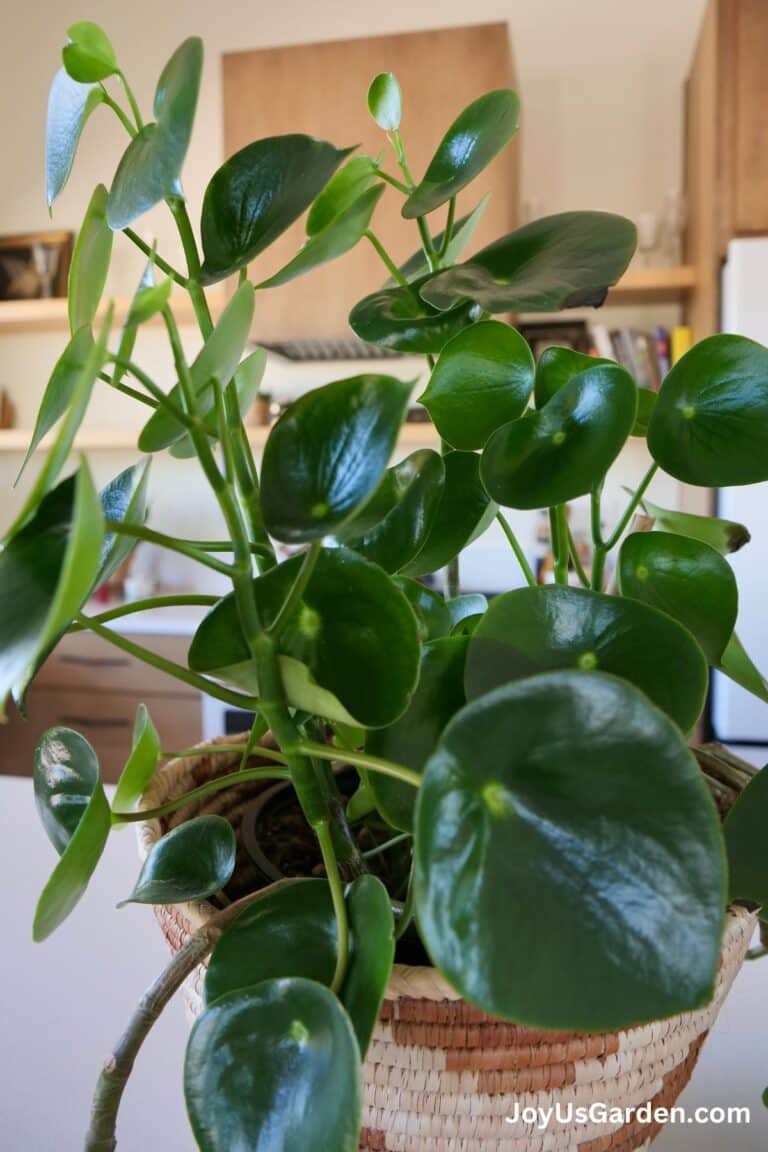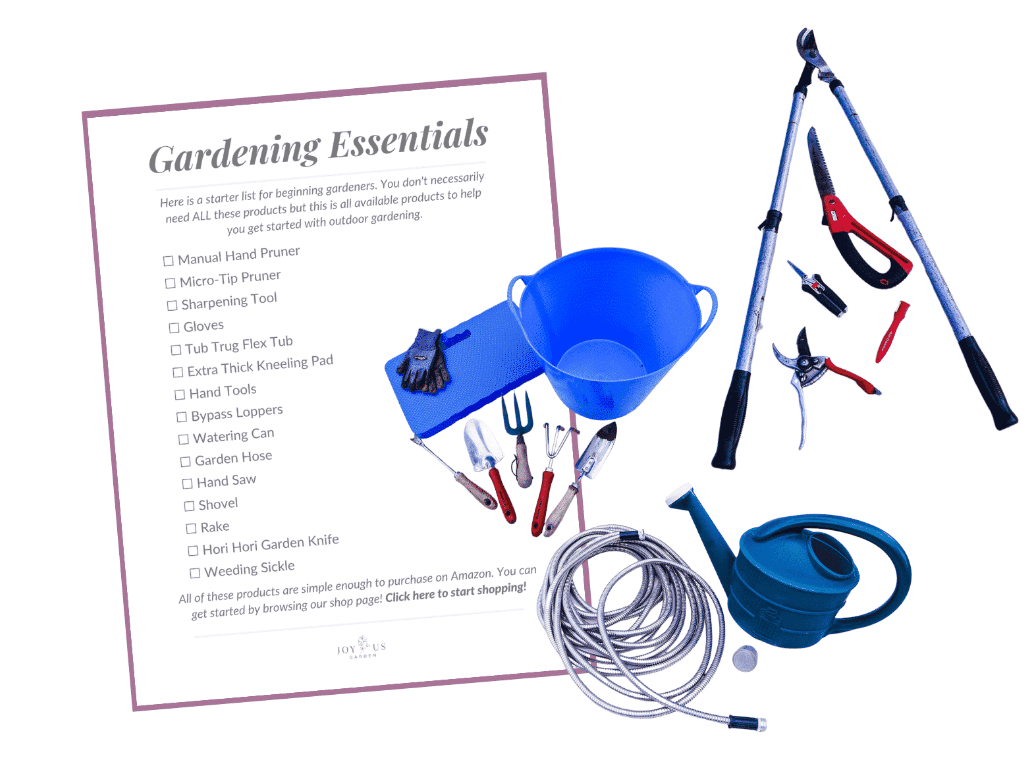When & Why to Repot Houseplants for Thriving Indoor Plants
Repotting season is in full swing, and it’s a great time to give your houseplants a little extra love. If you’re wondering whether your plant baby needs an upgrade—or why repotting even matters—you’re in the right place. In this guide, I’ll walk you through the best time to repot and why it’s essential for healthy, happy indoor plants. Whether you’re new to plant care or looking to boost your routine, this will help you repot houseplants like a pro.
I’ve been repotting plants for over 50 years now, and I’ve learned a lot along the way. While I’ve already shared a general guide to repotting both indoor and outdoor plants, this post dives deeper into the why, focusing solely on houseplants.
Understanding the timing and reasons behind repotting will help you give your indoor plants what they need to grow strong, healthy, and happy. Don’t miss the nine FAQs at the end—they cover useful info you might not know.
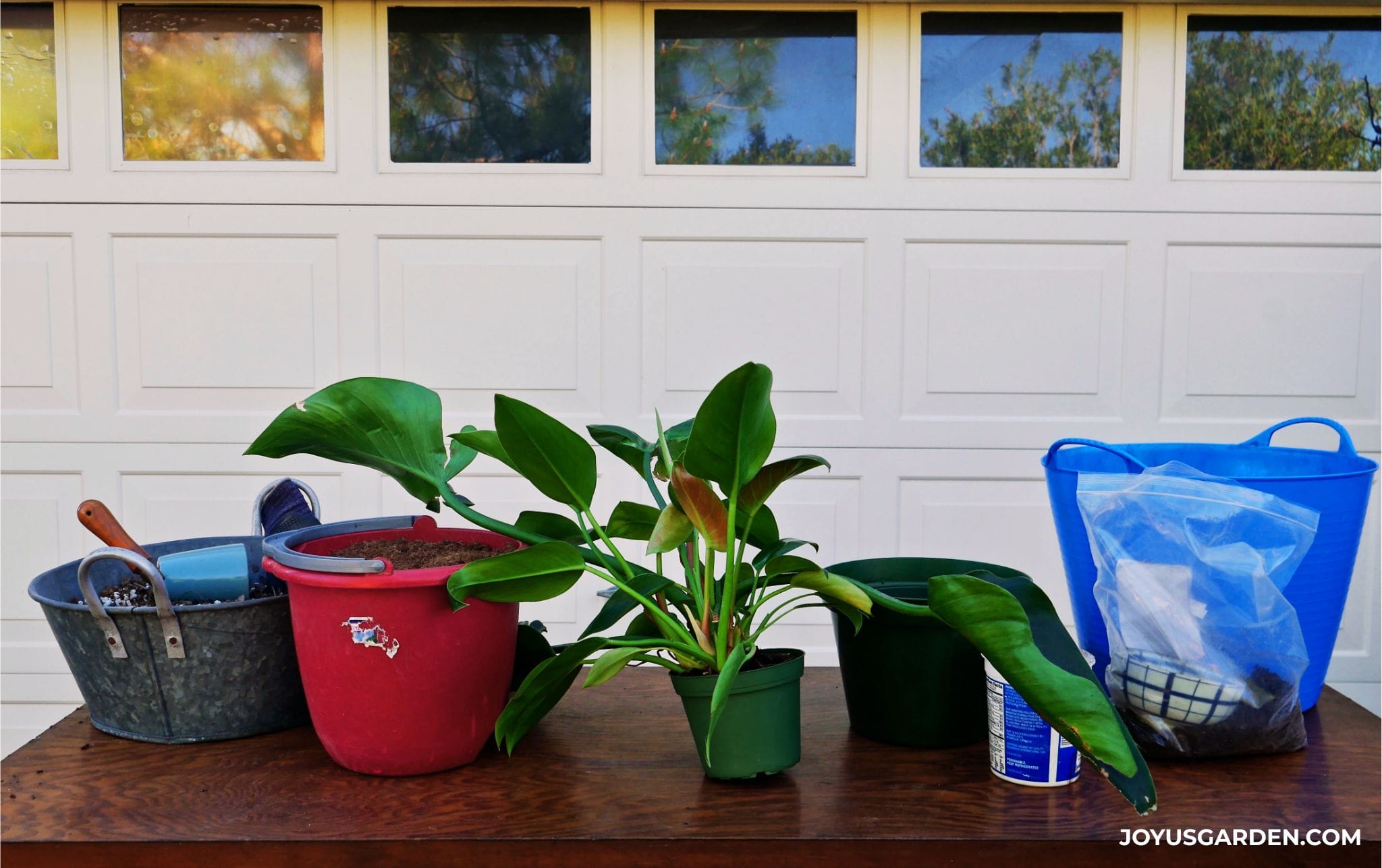
When to Repot Houseplants
Spring and summer are the active growing seasons and the best times for repotting. If you’re in a temperate climate, early fall is fine too.
Repotting during winter isn’t the optimum time, but if you have to, no worries. Sometimes plants can’t wait for ideal timing – if there’s root rot or a soil issue, go ahead.
Want to dig deeper? Our Repotting Category has plenty of info on tropicals, succulents, and cacti to guide you through the process.
Reasons To Repot Houseplants
1) You brought home a new plant, but the soil isn’t great.
Growers often use the same basic mix—usually with a heavy ratio of peat—for many types of plants, even if it’s not ideal for long-term growth. Or, the plant may have been sitting in that mix for some time. Repotting into a well-suited, new soil mix gives your new plant a healthier start in its new home.
2) The plant’s roots are growing out of the drainage holes.
As your plant grows, so does the root system. When the roots start poking out of the bottom, that’s a clear sign it’s ready for more space and time to size up the pot.
3) The plant is showing signs of stress.
If your plant is looking stressed (droopy, struggling to grow, or drying out quickly), the roots may be cramped and overgrown, even though they’re not visible from the drain holes. When a plant is root-bound, it’s time to repot—just be sure to gently massage the roots to loosen them so they can more easily spread out.
4) To freshen the soil.
Even if your plant doesn’t need a bigger pot, the soil can get tired over time. Nutrients have been depleted, the mix may become compacted, or it may no longer hold water. A refresh with a new mix is in order.
5) The plant is out of scale with the pot.
I’ve seen a 5′ Dracaena marginata “growing” into a tiny 6″ pot. Upsizing to something more proportionate (in this case, a 10″ pot) makes it look better and keeps the plant a lot happier.
6) The plant needs a sturdier base.
Sometimes the pot just isn’t heavy or wide enough to support the plant, especially when it has become top- or side-heavy. I’ve had to repot a few just because they kept tipping over and wouldn’t stand on their own. A larger pot provides your plant with the support it needs to stay upright and stable.
You can see how strong a Snake Plant’s root system is – they cracked the grow pot in a few places!
7) The pot has cracked.
Some plants, like a Snake Plant or ZZ Plant, develop strong root systems that can outgrow and even crack a plastic pot. It’s time to give those root balls more room.
8) To divide the plant.
I’ve done this plenty of times. When a plant is getting crowded in its pot, it’s a great time to divide it into two or three new plants. You can multiply your greenery and share a plant with a friend.
9) The soil is infested.
Pests like root mealybugs and fungus gnats can settle in, messing with the houseplant’s roots. Treat the roots and repot into fresh potting soil.
10) Salt and minerals have built up in the soil.
This often occurs due to tap water or over-fertilization. You might notice a white crust on the surface of the soil or around the edge of the pot.
11) The plant has taken a tumble.
It might seem obvious, but worth mentioning—if your plant has fallen off a table or shelf (I’ve been there a few times!), repotting is in order. The soil has spilled, so giving it a reset can help it recover and get settled again.
12) You want a new look.
If your plant is potted directly into a decorative pot, you may want a style refresh. Maybe you’ve moved, updated your space, or your taste has changed—clay pots might be more appealing to you now, whereas glossy white ones were your favorite a few years ago.
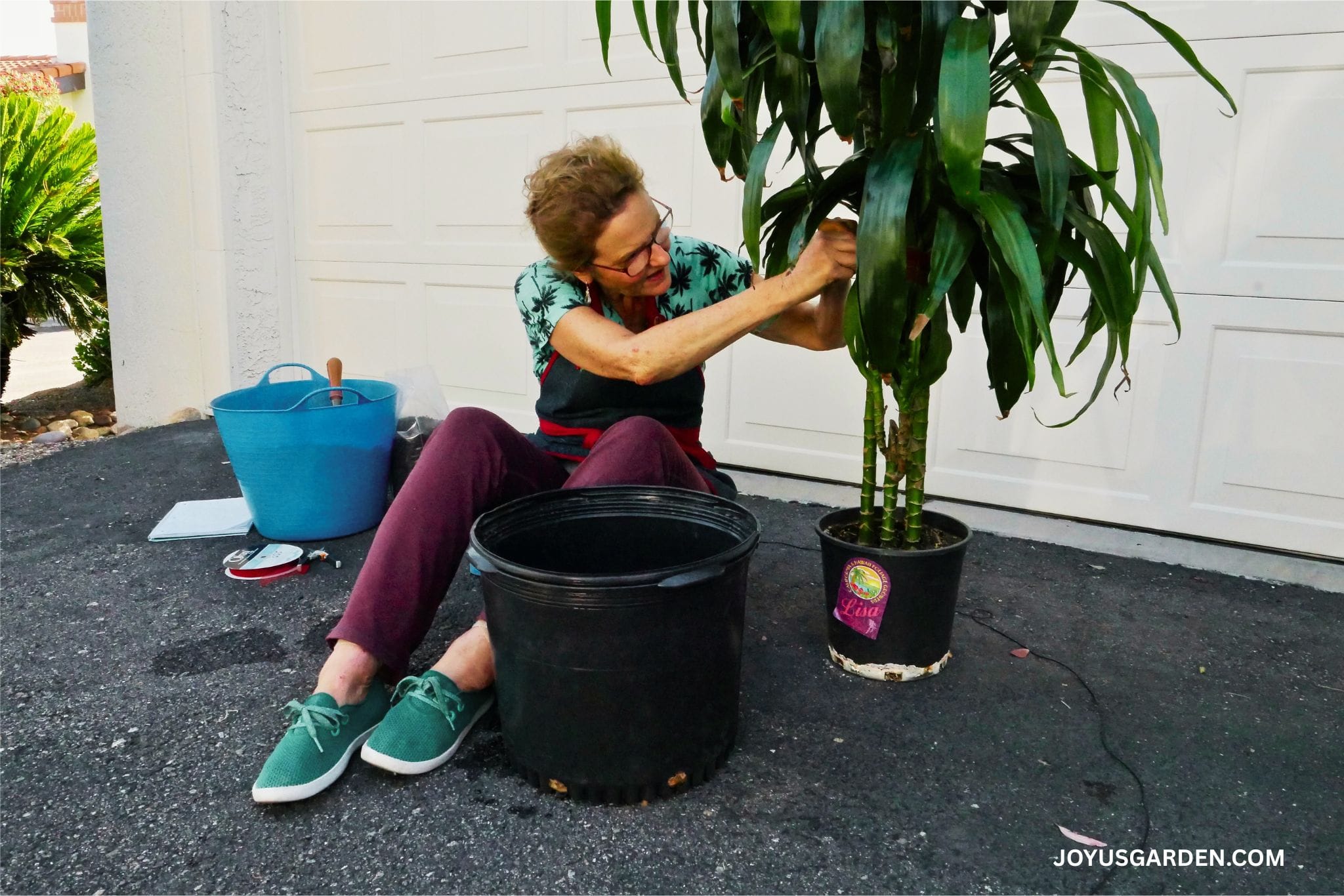
Repot Houseplants FAQs
Should I water my plant before or after repotting?
I water plants two to four days before repotting. You don’t want the plant to be bone dry, but neither do you want it to be sopping wet. With tropical houseplants, I water them right after repotting. With succulents or cacti, I let them settle in dry and then water 4-7 days after.
Is there a best time of day to repot a plant?
I don’t think this really matters. I like to repot during daylight hours simply because I can see what I’m doing—it just makes the whole process easier!
Does the type of plant affect how often I should repot?
Yes. A Spider Plant or Pothos grows fast and will need repotting more often than a slow grower like a Kentia Palm will. Some plants do better growing tightly in their pots, so frequent repotting isn’t necessary.
What size pot should I use?
Generally, go one pot size up from the old pot. For instance, from a 4″ pot into a 6″ pot. It also depends on the size of the plant. If your 5′ Dracaena is still in a 6″ pot (I’ve seen this!), jump it up to a 10″ pot.
Can I mix the old soil with new?
No. If you’re taking the time and effort to repot, use fresh, new potting soil. It provides nutrients, better drainage, and aeration for the roots—all of which help support healthy, new growth.
Does the type of soil and having drainage holes really matter when repotting houseplants?
Yes, both do. Tropical houseplants and cacti prefer different potting mixes. And, don’t use garden soil – it’s way too heavy for houseplants. Having at least one drainage hole on the bottom of the container allows excess water to flow out, helping to avoid the risk of root rot.
Can I repot into a decorative container without drainage holes?
Many beautiful decorative pots, particularly those made of ceramics and clay, may come with no drain holes. It’s not a good idea because water can build up at the bottom of the pot quickly, leading to rot. I’ve drilled holes into several pots using a diamond drill bit. Here’s a tutorial for that in case you’re interested. Here’s how to plant and water succulents in pots with no drain holes.
Why is my plant struggling after I repotted it?
Just as we do when we move into a new home, plants can also undergo an adjustment period. Your plant is likely experiencing a bit of “transplant shock.”
Can I repot a plant while it’s blooming?
No, it’s best to wait until the bloom cycle is complete and the flowers have died. Then, you can remove the dead stems and repot the plant.
Want to dig deeper? Our Repotting Category has plenty of info on tropicals, succulents, and cacti to guide you through the process.
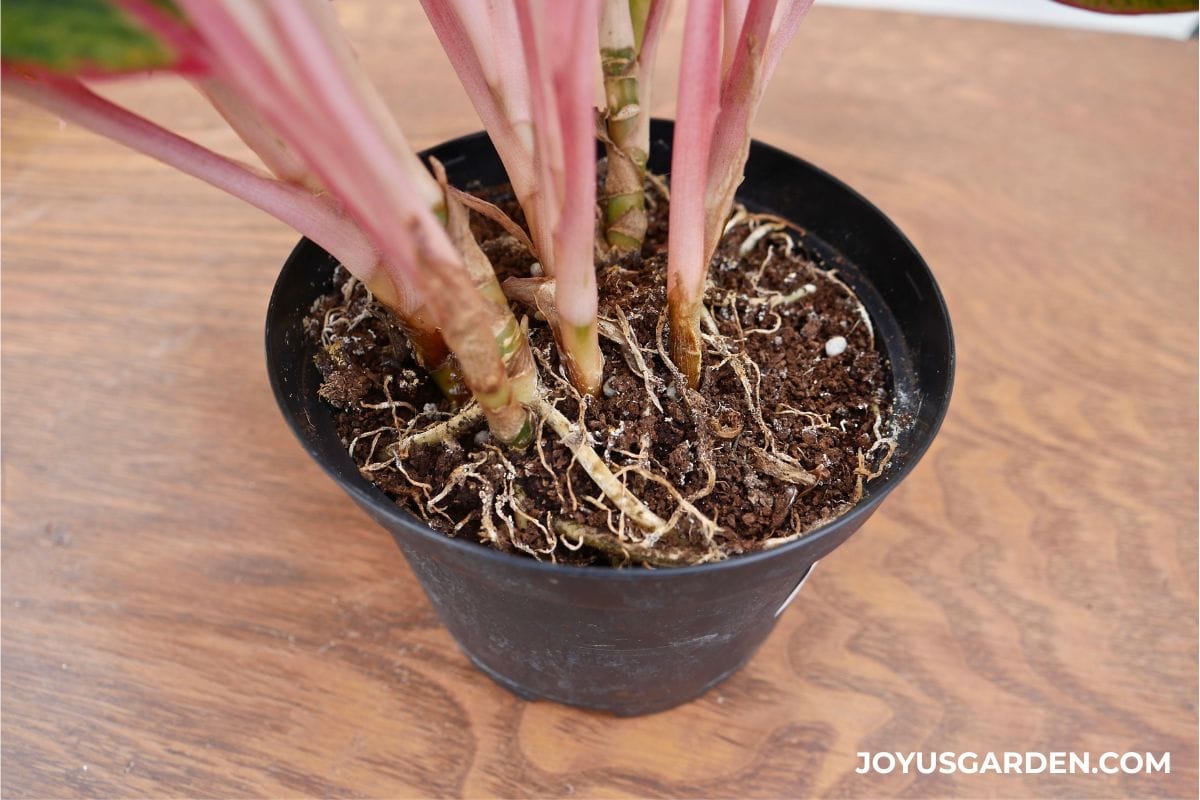
Conclusion: Repotting projects don’t have to be tricky—just a few simple steps can make a big difference. It’s always a good idea when your plant needs more space, better soil, or a fresh start. Knowing when and why to repot makes for happy houseplants and, if you’re a beginner, it builds your confidence along the way.
Happy gardening,



